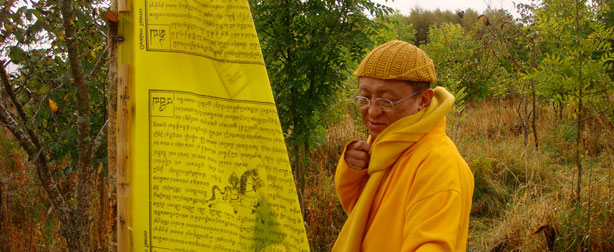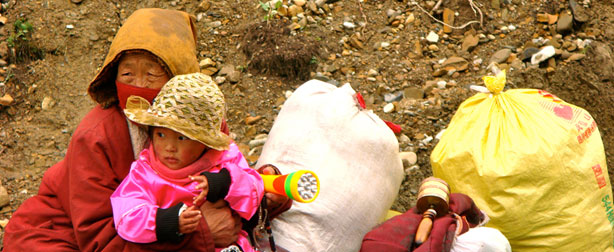Charitable Aims
A Summary of the Charitable Aims, Benefits and Activities of Rangjung Yeshe Gomde Trust
as defined for the Scottish Charities Commission (OSCR) and outlined in the founding Trust document
The advancement of Contemplation, Meditation and Philosophy
Aims
- To provide a place of peace, refuge and regeneration suitable for meditation and retreat for persons of any faith.
- To support the preservation and advancement of Buddhism, specifically the non-sectarian tradition of Vajrayana (Tibetan) Buddhism.
- To make authentic teachings on meditation available in the local area.
Benefits
- An inspiring and pure environment for meditation practitioners, especially those using the traditional Buddhist methods of training in meditation and compassion.
- Support and guidance for anyone wishing to study and practice meditation.
- Increased availability of authentic information for the general public about a unique but endangered aspect of our world heritage.
- Conservation of this tradition and the knowledge it embodies, for the benefit of future generations.
Activities
- Provide a peaceful setting that is inspiring and conducive to meditation training.
- Provide support for people wishing to practice meditation in retreat.
- Build a peace stupa, a traditional Buddhist monument considered a source of blessing and inspiration.
- Invite authentic, qualified meditation teachers to give public talks, teachings and meditation guidance.
- Organise seminars, workshops, study and meditation groups in the local area, make relevant books, teachings, and practice materials available.
The Advancement of Environmental Protection and Improvement
Aims
- To set a positive public example by implementing sound, sustainable, organic, long-term policies for the care of Trust properties.
- To utilise micro-project renewable energy sources and encourage low environmental impact strategies in the Trust’s activities and daily operations.
- To protect and further develop local ecosystems and habitats able to support and encourage increased native biodiversity and protect indigenous wildlife.
Benefits
- A public example of how a project can be run using renewable energy.
- A positive eco-friendly impact on local environment.
- Improvement of the quality of the woodland by encouraging diversification of native varieties of flora and fauna.
- Protected and varied habitat for local wildlife.
Activities
- Sustainable, organic management and conservation of any Trust property.
- Carbon neutrality through requiring those using the facilities to respect “green” principals in daily life decisions
- Create a protected, undisturbed area for wildlife to flourish and continue to increase the variety of native plant species.
- Increase awareness about the links between Buddhism and conservation of the environment by emphasising core concepts like Cause and Effect and Interdependence.
The Advancement of Human Health
Aims
- To support the overall wellbeing of body and mind through promoting meditation and healing practices as traditionally practiced in the Himalayan regions.
- To increase awareness of the value of traditional, herbal medical traditions and the plants on which they are based and to further conservation efforts wherever they are endangered.
Benefits
- Supportive conditions for any person wishing to find out about or practice meditation.
- Increased knowledge and understanding of the benefits meditation, mindfulness training, positive attitudes and compassion.
- Conservation and appreciation of traditional healing methods and the natural plant resources, which are often under threat.
Activities
- Provide information to the public about the benefits and practices of training in compassion and meditation.
- Provide a suitable and supportive environment for meditation.
- Make information available on traditional healing methods, in particular the endangered Tibetan tradition, and increase awareness of conservation issues for plants.
- Create gardens dedicated to both native Scottish and Himalayan medical plants.
The Prevention or Relief of Poverty
Aims
- To research, develop and support projects that help poor people in Himalayan countries.
- To provide social assistance, encourage sustainable conservation and promote cultural activities for the long-term benefit of people regardless of their race, religion or nationality.
Benefits
- Physical benefit and advancement of poor, disadvantage groups through practical improvements to their lives.
- Enable and support sustainable projects that benefit the Himalayan region.
- Encourage the practice of generosity and charity and the wish to help others who are less fortunate.
- Increased public appreciation of the facilities and benefits of their own culture such as healthcare, water, sanitation, roads, housing and good governance.
- Cross-cultural appreciation of common values.
Activities
- Identify and fundraise for projects that help the poor in developing countries, especially those in the Himalayan region.
- Practical support for sustainable projects in the Himalayan region, through raising awareness, and providing technical advice and financial help by linking worthwhile projects with appropriate individuals, organisations and charities.
No Responses yet










